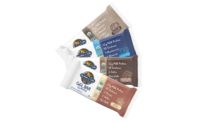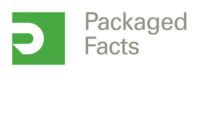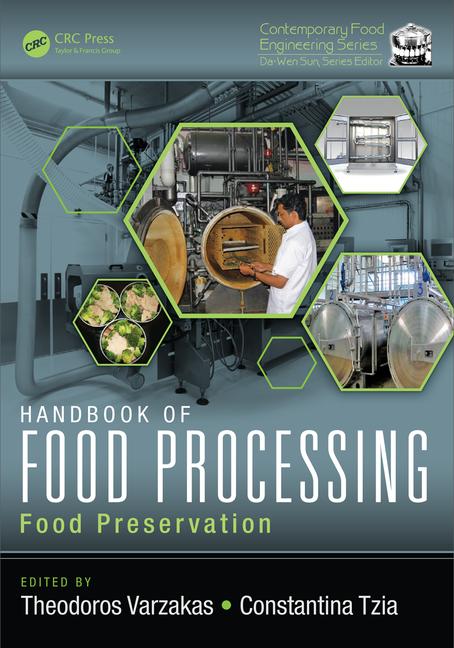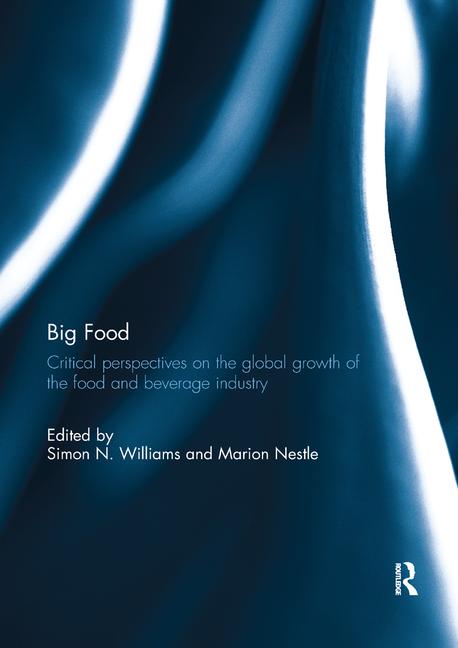Clean and Simple Food Labels
Prepared Foods’ R&D Seminar presenters give attendees helpful, how-to advice to formulate foods that meet consumer clean label demands.




Formulating with Clean Label Meat and Savory Flavors
Flavoring ingredients deliver targeted taste profiles, replace flavor character lost during processing, and supply basic flavor character to fabricated foods. In the manufacturing setting, flavor ingredients contribute the lost character of the culinary cooking process. Flavors make finished products more palatable; disguise unpleasant notes, such as bitterness and soy; and sometimes replace costly natural ingredients.
Tasting food involves not only taste; aromatics and mouthfeel also play a big part. The detection of stimuli by the taste buds, or taste, is affected by temperature, viscosity, rate and duration. Aromatics—the smell as perceived by the olfactory cells in the nasal area—influence taste, as does mouthfeel, which is detected in the mouth by tactile nerves and can be influenced by chemical irritants.
Speaking at Prepared Foods’ R&D Seminars, Dafne Diez de Medina, VP–Innovation & R&D, Innova Flavors, offered: “Flavor ingredients are typically complex, containing top-notes, functional additives, colors, antioxidants and processing aids.”
Flavor adjuncts, such as onion, garlic and vegetables, often contribute to the final savory flavor. Umami savory flavor can be achieved with monosodium glutamate (MSG), inosinate and guanylate (I & G), yeast extracts and hydrolyzed vegetable proteins (HVPs). Maltodextrin is a common carrier.
Flavor formats are liquid, dry or paste. Liquid flavors can be water- or oil-soluble. Dry flavors can be plated, with flavor blended into a carrier, or spray-dried—which is efficient and the most common powder-drying method. Less common is pan-drying, which is when a flavor is reacted and dried in one continuous process, reducing the need for carriers.
Meat and savory flavor ingredients can be made from hydrolyzed vegetable and animal proteins, meat protein and fat, yeast extracts, natural chemicals, dairy products, enzyme-modified cheese, vegetable, fruit, spice and extractives. Reaction flavors are created when a combination of natural ingredients is reacted under specific conditions of time, temperature and pH to create a desired concentrated flavor.
Reactions may include Maillard, degradation, oxidation, caramelization, polymerization and hydrolysis.
“The Maillard reaction is based on combining a protein source (amino acids) with a reducing sugar and applying heat. The result can be a flavor base, such as beef, chicken or pork, where further flavor development occurs, creating a more roast character,” explained Diez de Medina.
Developing meat and savory flavors involves a process of monitoring market and consumer trends; finding the culinary gold standard; flavor development; evaluation and, finally, launch. Progressing to clean labels with all-natural and no artificial ingredients requires transparency and trust of consumers.
Clean labeling refers to not only the label and ingredient declaration, but it also refers to restrictions in ingredients and processes. There is no FDA definition for “clean”—it is customer-specific criteria with a spectrum of “clean” to “ultra-clean.”
In order to formulate clean label flavors, it is necessary to understand ingredient functionality, basic taste, nutritional impact and functional needs. For example, to replace MSG, a combination of autolyzed yeast extracts (AYEs), HVPs, high-glutamic acid ingredients, ribotides, organic acids and other MSG replacers can be used.
To clean up a label on a savory ancho dry mix for marinade, which originally contained MSG and I&G, two possibilities exist. One is the use of AYE, which is considered clean; another is to use no AYE and go ultra-clean. In chicken bouillon, natural chicken flavor can replace MSG, HVP and I&G. Natural pork flavor replaces soy HVP and MSG in pork gravy.
Resources are available to address the complexities of specific, clean label requests, including ingredient availability, lead times, MOQs, cost, labeling, branding and positioning, with consideration of the proprietary nature of customized business.
“Formulating with Clean Label Meat & Savory Flavors,” Dafne Diez de Medina, VP–Innovation & R&D, Innova Flavors, 630-928-4850, ddiezdemedina@innovaflavors.com
—Summary by Elizabeth Pelofske, Contributing Editor
Formulating Clean Labels
Consumers think of clean labels as having familiar ingredients with no chemical-sounding names; being minimally processed; and having no artificial preservatives, colors or flavors. “Whatever the meaning,” explained Michael Beavan Ph.D., director of technical services, Bakery Ingredients Division, for Watson, Inc., “the label needs to be truthful, and the product needs to be safe.”
Consumers were divided into five groups by the Natural Marketing Institute last year.
“The ‘well-beings’ are committed to improving their health; ‘food activists’ talk about ingredients in food, look at the contents and see exactly how much of an undesirable is consumed. ‘Magic bullets’ seek specific health benefits whether stronger bones, weight loss or heart health, and this is a growing segment. ‘Fence-sitters’ are overwhelmed by the back-and-forth on social media and do not know exactly which way to go. And the ‘eat, drink and be merries’ do not care, but are interested in affordability,” explained Beavan.
A commercial bakery, for example, needs to target all of these groups, not just one.
Considering bread; the majority of breads contain the same six ingredients: flour, water, yeast, salt, sugar and oil. Nice, short words, nothing “unclean” about these. The seventh ingredient is time.
“If you have time, you can expand the number of products made out of the six ingredients,” said Beavan.
However, consumers want variety, and this is where all of the other ingredients come in—like grains, conditioners, shelflife extenders, and color and flavor enhancers. Dough conditioners and shelflife extenders give consumers a lot of clean label issues. These are the additives. Dietary guidance shows that levels of all the additives used are safe, but, if consumers want clean labels, then some or all need to be replaced. This can be a challenge, but is being done.
For example, some time ago, bromate (not clean) has been replaced with a combination of ascorbic acid (a medium-strength oxidizer), azodicarbonamide (a strong oxidizer) and fungal alpha amylase (for machinability). Azodicarbonamide now has its own issues. But, by using different particle sizes and time-release (such as encapsulation), production and end-products can be controlled.
However, higher-fiber breads with grains put a lot more pressure on the gluten, so it needs increased strength. Moisture distribution in the dough is also more important.
Over the years, it has been found that using enzymes and lecithin can replace a lot of longer-named ingredients and produce bread with soft crumb and fine grain. Surface active DATEM and SSL can sometimes be replaced with lecithin and phospholipase, an enzyme which can also act on the natural phospholipids in the flour.
Clean label cakes will not be seen very soon, but that does not necessarily matter—as cakes are indulgence products. Cakes are extremely difficult to stabilize and extend shelflife without crumb softeners and mold inhibitors. However, lecithin and enzymes can be a good replacement.
“For mold inhibitors, manufacturers are frequently moving from propionates to cultured or fermented starches or flours. Sorbate is natural, but none of the available product is naturally produced. Certified colors cause a lot of clean label problems but are inexpensive and give consistent results. Annatto and beta-carotene can be a pretty stable replacement,” advised Beavan.
Beavan closed by saying that “labels are about trust; they need to be transparent, and trust pays off. Labels need to appeal to different types of customers, but the key is the product needs to be safe. There are enough ingredients available to provide consumers high-quality baked products with cleaner labels.”
“Formulating Clean Labels,” Michael Beavan, Ph.D., director of technical Services, Bakery Ingredients Division, Watson Inc., 203-932-3000,
mike.beavan@watson-inc.com
—Summary by Elizabeth Pelofske, Contributing Editor
Processing Aids to Improve Safety, Quality
The role of processing aids can be misunderstood by consumers, and many processors underutilize them due to regulatory, customer or cost concerns. However, if used efficiently, processing aids can have meaningful benefits to processor and consumer.
Processing aids are substances used in the production of foods, but present at insignificant levels, without any technical or functional effect in the finished product. Processing aids meeting criteria are exempt from labeling.
According to Brandon Baer, food technologist at A&B Ingredients, “Common processing aids include de-coloring agents in refining sugar; strengthening agents or dough improvers; joining agents and rennet in cheese; de-foamers and de-greasers; fruit, vegetable and herb washes; and antimicrobial interventions.” Baer spoke at Prepared Foods’ R&D Seminars in a presentation titled “Use of Processing Aids to Improve Safety and Quality of Minimally Processed and/or Clean Label Foods.”
Processing aids can be used in any FDA- or USDA-regulated food. In natural products, USDA views use of certain antimicrobials as processing aids, because FSIS determined that their use is consistent with FDA’s definition of a processing aid in 21 CFR 101.11 (a)(3)(ii)(c). This approval and exemption from labeling is listed in FSIS Directive 7120.1. Because use of a particular antimicrobial is as a processing aid, it does not require labeling, and its use does not conflict with the labeling term “natural.” This position is consistent with the use of other antimicrobial agents as processing aids on meat and poultry products identified as “natural.”
FDA has not been as clear as USDA/FSIS, but processors can use the above logic.
“In organic products, processing aids can only be used and exempted from labeling if listed on the NOP list,” said Baer.
One example of this control is in how USDA approaches Listeria monocytogenes in post-lethality exposed, ready-to-eat meat and poultry products. The first step is identifying the problem and using multiple levels of protection—such as sanitation, post-lethality treatment (PLT) (processing aid) only; or growth inhibitor (preservative) only; or a combination of both PLT and preservative.
USDA has a list of approved processing aid antimicrobials; for a new approval, a submission of data is required to FSIS. FSIS determines whether a substance meets the definition, and this is done on a case-by-case basis. The substance must be GRAS or safety assessed by a similar process. The level should be the least amount to achieve effect in processing. Data must be submitted to show no lasting technical effect, and/or that the substance breaks down or is removed.
Baer explained that FDA requires data to be on hand to defend the processing aid view for the product and process. This is the same data required by USDA, but FDA lacks the approval step.
When treating in a process, it is important to always treat after the contamination point. When contamination is from raw material and further steps are clean, treat early to avoid contaminating further steps. When contamination risk is during process, treat later to catch the after handling and eliminate microorganisms in finished product.
In reality, there is likely contamination from raw material and risk in the process; therefore, the entire process should be taken into account. Focus on areas that are not treated currently and or high-micro raw materials. Formulation affects growth of these starting micro levels.
Ultimately, use of processing aids is up to the processor. They can be used effectively to improve food safety and quality, but it is critical to identify where their function is most useful. And data is needed to prove that use conforms to regulation.
“Use of Processing Aids to Improve Safety and Quality of Minimally Processed and/or Clean Label Foods.” Brandon Baer, food technologist, A&B Ingredients, 973-227-1390,
bbaer@abingredients.com
—Summary by Elizabeth Pelofske, Contributing Editor
Looking for a reprint of this article?
From high-res PDFs to custom plaques, order your copy today!









